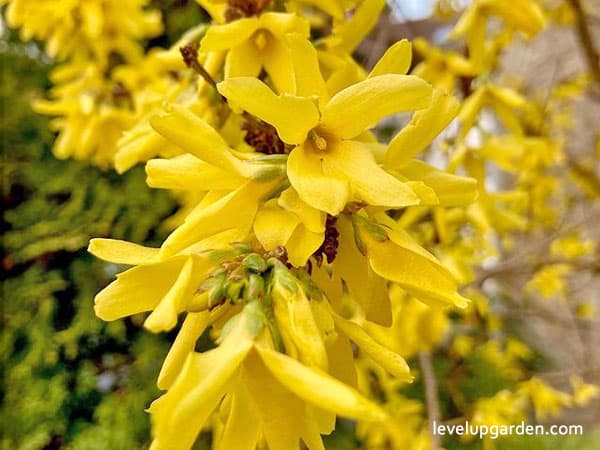Meyer lemon (Citrus x limon ‘Meyer’) is a small, flowering, woody, evergreen, broad-leaved tree of the tangerine family. The fruit is edible but is often grown as ornamental. Native to China, it was brought to the United States in the early 1900s. It is a hybrid between Citron and Mandarin Pomelo and differs from the common lemon and bitter lemon. Read on to learn everything about this beautiful plant before you decide to plant one in your garden.

This evergreen shrub has large, rounded, orange-yellow fruits that are about 8 cm in diameter. They are less acidic, juicier, and sweeter than regular lemons, and have a pleasant tangerine-like fragrance. The fragrant flowers have beautiful waxy white petals and bunched white stamens adorned with yellow anthers. They look great against the ovate, glossy, dark green evergreen foliage. When grown outdoors where it is warm, both flowers and berries can be seen year-round. However, it may go dormant when winter temperatures fall well below 55°F. It can be enjoyed around the house or on the patio as a lemon substitute or as a houseplant.
Meyer lemon is believed to be a hybrid between Citrus limon (lemon) and Citrus reticulata (tangerine). The original Meyer tree was banned from commercial production decades ago because it carries a virus that is deadly to citrus fruits asymptomatically. It was later replaced with a virus-free variety and is now called the improved Meyer lemon.
I. Meyer Lemon (Citrus x limon ‘Meyer’) Profile – An Overview of the plant
| Common Name | Meyer lemon, Meyer’s Lemon, Dwarf Lemon, Citrus × limonia ‘Myer’s Lemon’, Citrus × Meyeri ‘Meyer’, Citrus ‘Meyers’, Citrus ‘Meyer’s Lemon’, Meyer Lemon, Valley Lemon, Meyers Lemon |
| Botanical Name | Citrus x Limon ‘Meyer’. Previously known as Citrus ‘Meyer’Citrus x meyeri |
| Native Area | China |
| Plant Type | Fruit, Shrubs |
| Plant Family | Citrus |
| Hardiness Zones | 9 – 11 (USA) |
| Exposure | Full Sun, Partial Sun |
| Water Needs | Average |
| Maintenance | Average |
| Soil Type | Clay, Loam, Sand |
| Soil pH | Acid, Neutral |
| Soil Drainage | Moist but Well-Drained |
| Mature Height | 6 – 10 ft. |
| Mature Width | 4 – 8 ft. |
| Bloom Time | Fall, early spring |
| Flower Color | White |
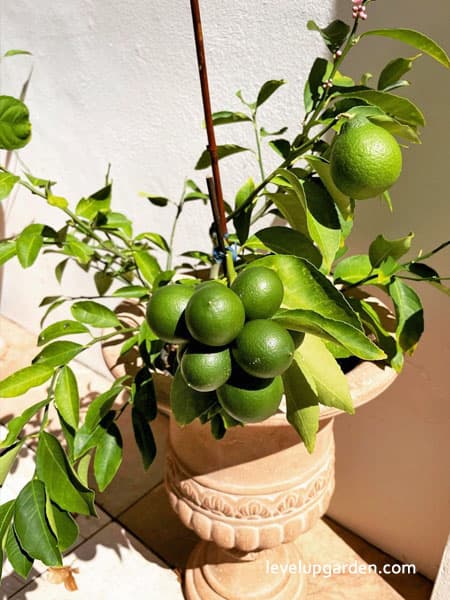
II. Appearance
- Leaf: Oval leaves with shiny, glossy surfaces. Leaf margins may be smooth (entire) or lobed (serrate).
- Stem: Young trees are green and grow in a zigzag pattern. Both young and old trees have a few thorns.
- Flower: The five-petaled, white, remarkably fragrant flowers bloom in clusters. Buds are slightly purplish before opening. In the right climate, it will flower all year round.
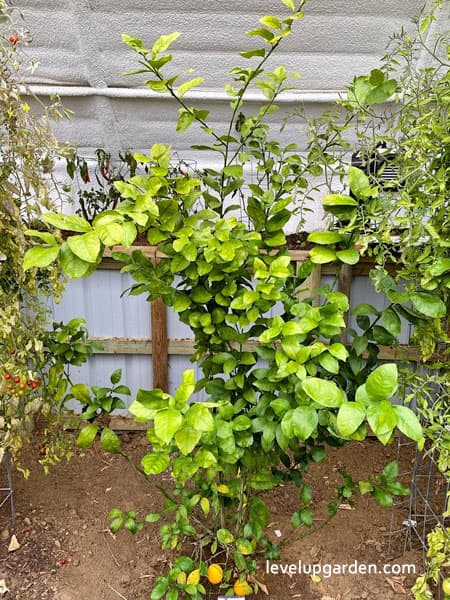
III. Growing and Care Conditions
The plant should be grown in full sun to semi-shade, always in moist, well-drained soil. Prefers to be allowed to dry out and then watered. The best performance and fruiting occur in full sun. Fertilize only in spring through fall while growing, and reduce watering during the winter months. Prune branches to improve air circulation and keep the size small. Pruning clusters to one or two pieces will also produce larger, healthier fruit.

Because of its susceptibility to frost, it is best grown in containers in areas below 8b or 9a so that it can be brought indoors in the winter. Indoors, it should be kept in a sunny location and receive its best light from a south-facing window. To produce fruit indoors, hand pollinate the flowers and continue to fertilize every 3 months.
- Watering: Roots prefer dryness, but citrus leaves prefer humidity. Indoor citrus can benefit from daily misting to keep them moist, especially if heating is used during the cooler months. Use a humidifier or place a stone in the pot’s saucer, add water, and place the plant on the stone so that the bottom of the pot is above the waterline.
- Sunlight Needed: Sun is a favorite for all citrus trees, and the same is true for Meyer lemon trees. They produce best when grown in a sunny location, but can also do well in a slightly shady spot. This tree prefers to be in direct sunlight for at least 8 hours a day.
- Fertilizer: Apply a high nitrogen compound fertilizer regularly each month from April through September.
- Soil Requirements: Lemon trees will grow in any well-drained soil. They prefer a soil pH of 5.5 to 6.5 and grow well in loam or sandy soil. It is good to test the soil before planting to determine if any adjustments are needed. If necessary, lime can be added to raise the soil pH or sulfur can be added to lower it.
- Temperature and Humidity: Lemon trees grow best between 50 and 80 degrees Fahrenheit. This means that unless you live in USDA growing zones 9 through 11, you should bring your trees indoors when temperatures regularly begin to drop below this range. Even if you are in zones 9 to 11, you need to protect your trees when temperatures drop below freezing. Cover them with a covering that reaches down to the ground to keep the heat from the earth. Citrus trees do best when there is more than 50% humidity. If you do not have a humid area indoors, line a tray with stones, pour water just below the stones and place the pot on top of the stones to allow humidity to rise around the plant. Also, consider placing a small humidifier nearby.
- Planting: The Improved Meyer Lemon Tree should be planted in a warm, sunny location with well-drained soil. At least 6 hours of direct sunlight is optimal. Planting near the house or under the eaves will provide frost protection. Newly planted trees may need more frequent watering until they are established.
- Pests and Diseases: Beware of mites, beetles, whiteflies, aphids, and caterpillars. If you notice ants on your plants outdoors in the spring, it may indicate a scale problem.
IV. Uses
Lemon trees can bear fruit in just two years after planting. Whether planted on the lawn or on the patio, this tree can be used as an ornamental or as a citrus sweetener.
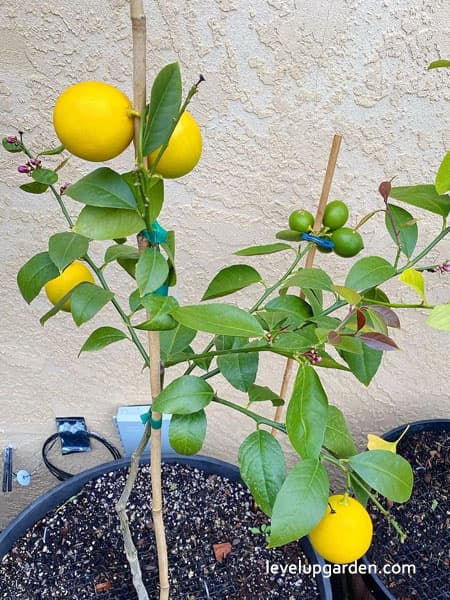
The fruit, juice, and peel are used as ingredients in medicines. It is also used for colds, flu, H1N1 (swine) flu, tinnitus, Meniere’s disease, and kidney stones.
V. Why should you buy this plant?
Meyer lemons are a cross between a conventional sour lemon and a sweet orange, so they are different from the small, sour lemons sold in supermarkets.
Supermarket fruit, as you know, is selected for its shelf life, not its taste. This is why lemons are small and have very thick skins. Meyer lemons are not sold in supermarkets because their skins are so thin that they will be damaged if kept in a wooden box. The thin skin allows the citrus juice to fully develop, making it the perfect fresh fruit for juices, desserts, and flavorings.
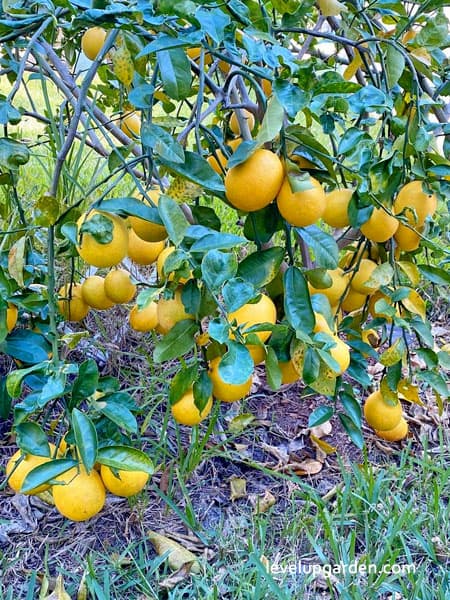
The Meyer lemon tree is cold- and heat-tolerant and can be grown by anyone in the country. If winters are cold, simply bring the Meyer lemon tree indoors and it will survive the winter. If winters are cold, you only need to bring it indoors for the winter. And if you bring it indoors, you can enjoy the scent of jasmine and citrus throughout the long winter months. If the sun and growing conditions are not ideal, we recommend starting with a large tree. These trees are already large enough to produce a lot of fruit and are well-branched. Some of these trees have been growing for 4-5 years and have produced fruit for several seasons.
VI. FAQs
How often do Meyer lemon trees bear fruit?
Meyer Lemon trees usually produce flowers and fruit all year round (more in the fall and winter) starting about the third to fifth year.
Why are my Meyer lemon leaves turning yellow?
Nitrogen can cause leaves to turn yellow. While nitrogen deficiency causes old leaves to turn pale, plants can transfer nitrogen to shoots. Lack of nitrogen reduces fruit production and plant vigor.
How do I protect my Meyer lemon tree in the winter?
On nights when freezing temperatures are expected, covering the tree with a blanket or thick tarp will protect the tree and the berries left on it from freezing. To do this, build a tripod around the tree with light timber or PVC pipe and cover it with a frost protection cloth or tarp on cold nights.

